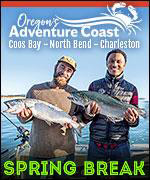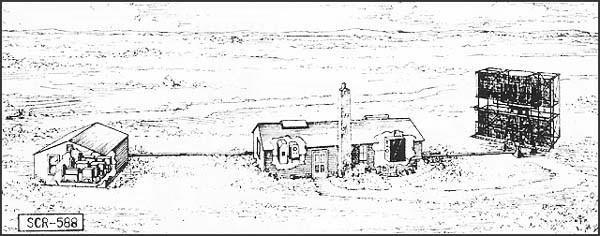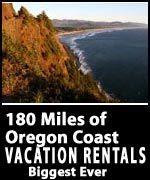How Pearl Harbor Attack Changed Oregon Coast, Washington Coast: Beach Patrols
Published 12/07/21 at 6:32 PM PST
By Oregon Coast Beach Connection staff
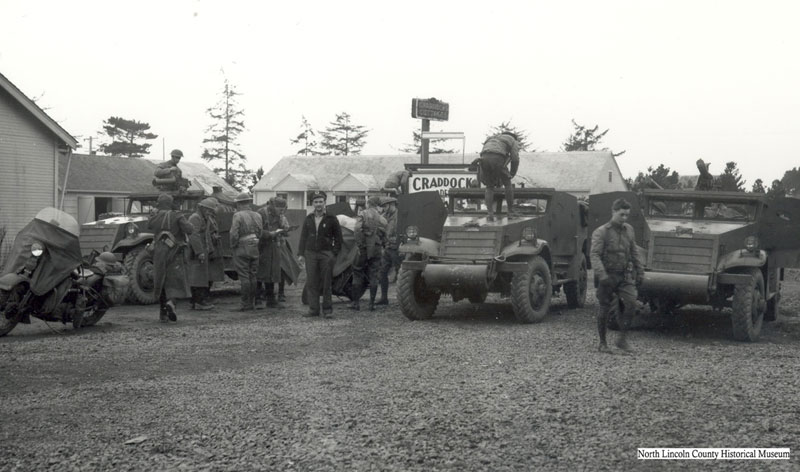
Includes exclusive listings; some specials in winter
In Cannon Beach:
Includes rentals not listed anywhere else
In Manzanita, Wheeler, Rockaway Beach:
Some specials for winter
In Pacific City, Oceanside:
Some specials for winter
In Lincoln City:
Some specials for winter
In Depoe Bay, Gleneden Beach:
Some specials for winter
In Newport:
Look for some specials
In Waldport
Some specials for winter
In Yachats, Florence
Some specials for winter
Southern Oregon Coast Hotels / Lodgings
Reedsport to Brookings, places to stay; winter deals
(Oregon Coast) – On December 7, 1941, people in the U.S. listened to an unprecedented disaster unfolding on their radio. The Japanese, back then in league with Nazi Germany, were in the middle of bombing Pearl Harbor in Hawaii, destroying 19 ships and killing almost 2,500 people, effectively drawing the until-then hesitant United States into conflict with the Axis powers. (Above: beach patrols billeted at the Craddock Cottages in Lincoln City, courtesy North Lincoln County History Museum)
Along the Oregon coast and Washington coast, the news was greeted with the usual fear, shock and anger. One southern coast newspaper ran an editorial that expressed a kind of relief that President Roosevelt was now absolved of any warmongering accusations, and the battle could finally be joined. We would enter World War II.
Within a few months, the Oregon coast would be heavily guarded, like much of the West Coast (although California was considered a much bigger target by enemy Pacific forces). Lookout towers and stations would go up everywhere; existing high vantage points would be turned into lookouts. Radar stations went up secretly at spots like Tillamook Head or Coos Bay. Blimps regularly showed their bloated shapes in the skies above coastal towns as they ran search patterns for most of World War II. Radar Bunker at Coos Bay's Cape Arago: Living S. Oregon Coast History -- The Mysterious World War II Bunker Atop Oregon Coast's Tillamook Head
Most of all, the beaches of Washington, Oregon and California would become heavy with patrols, especially with the Coast Guard Beach Patrols, otherwise known as the “Sand Pounders.”
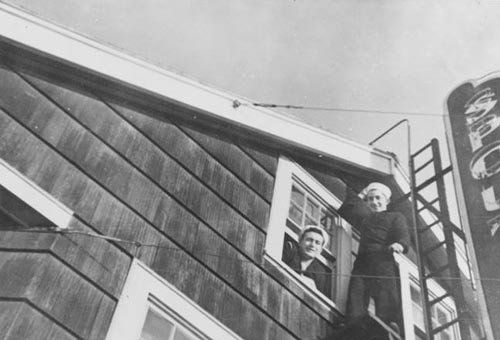
Military on the coast were often housed at hotels or cottages, such as here at Depoe Bay (courtesy Newport's Lincoln County Historical Society)
Life during wartime was no day at the beach on the beaches of Oregon and Washington, which were guarded by the 13th Naval District, headquartered in Seattle, under the charge of M.P. Jensen. Under him were two brothers: F.E. Barnett was in charge of Washington's coastline while L.E. Barnett oversaw Oregon.
Interestingly, beach patrols started early in 1941, however, almost a year before Pearl Harbor. This special branch of the Navy was created by an executive order, and according to some newspaper reports by July of ‘42 some 100 men from Portland and other spots had signed up to be part of the auxiliary of the Coast Guard Beach Patrol alone.
In Cannon Beach, according to the town's history museum, locals formed a special patrol of civilians called “The Guerrillas” right after Pearl Harbor, and guards were placed by the Arch Cape Tunnel.
In a 1943 special report by The Oregonian which focused on the Oregon coast, where the military beach patrols were located was a big secret at the time. To this day, a lot of those spots have been lost to time, forgotten over the years after the secrets could finally be revealed. Small metallic round structures were sometimes constructed as lookouts along high vantage points, looking like small, stumpy lighthouses, and there seem to be none left these days.
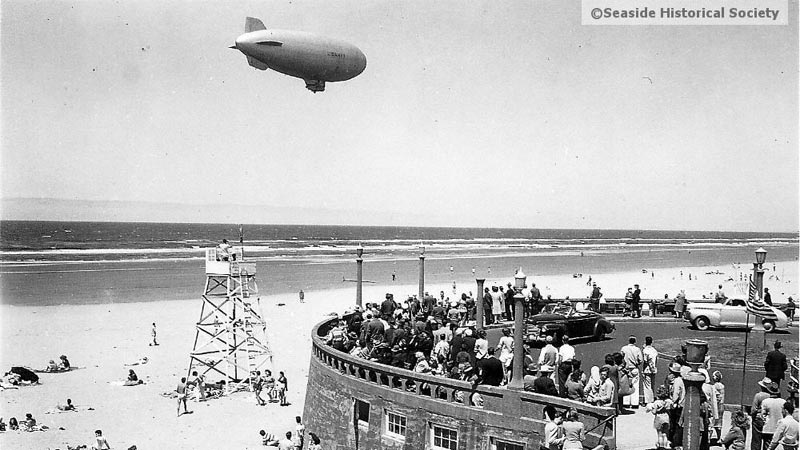
Courtesy Seaside History Museum
Beach patrols were about much more than keeping an eye out for enemy invaders from the Pacific. In fact, tourists taking pictures of any beaches were not even allowed during these patrol years (which ended in ‘44 or so). These men were there to confiscate your camera if you even brought one to the coast.
Their guard stations and lookouts were absolutely off limits as well, and they were there to enforce that too.
Also under their purview were the blackouts at night: all light sources were to be blocked at night from the Oregon coast or Washington coast. Not even an outline of the edges of the blinds was permitted to be lit up. There's a memorable newspaper report from this period from the Depoe Bay area where the local commander in charge threatened martial law if some locals didn't comply, as they hadn't been.
Beach fires at night were prohibited, and so were lovely moonlit walks on the beach. You'd get rousted at gunpoint for any of that.
Most of all, however, these men walked the beaches of the two coastlines, and if they couldn't walk an area there were boats that patrolled cliff sections, like many of those around Coos Bay or Depoe Bay. One kind of guard station or another was set about every three quarters of a mile apart, and Sand Pounders generally ran in pairs, going for six hours and covering about two miles back and forth. At each station they'd have to phone in their reports.
On patrol, one man held a 30-pound walkie talkie while the handled the nasty guard dogs, and both carried Tommyguns. The coastguardsmen walked these beaches no matter the weather, which included those infamous winter storms and their gusts of 50-plus to even hurricane force blowouts.
Guard dogs were notorious as well, and many Sand Pounders were bitten. To offset this disturbing interaction, the men were allowed to keep actual pet dogs of a more gentle nature to play with, which according to newspaper reports they appreciated.
Most of the men were paid $54 to $66 per month at the time.
They were trained well to judge distance of anything they spotted at sea – be it airborne or on the ocean. But most all approach of anything within three miles of land was prohibited back then.
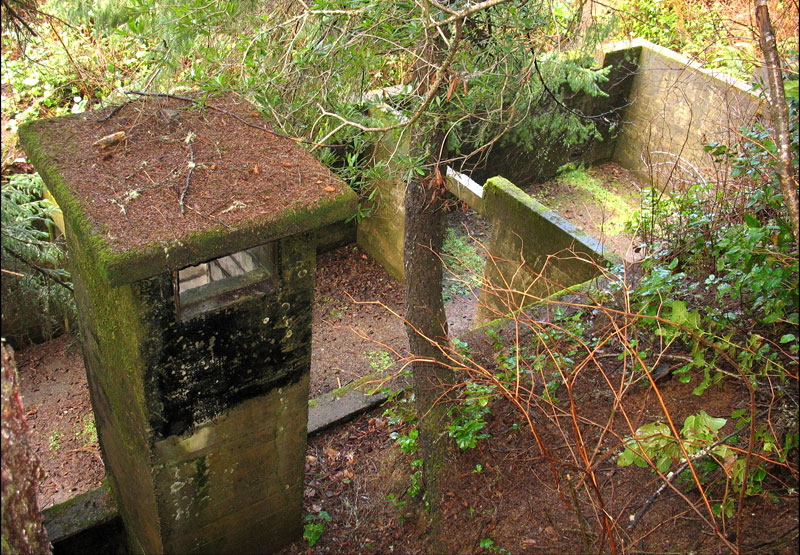
Old radar bunker at Coos Bay, courtesy Coos Bay History Museum
Meanwhile, air patrols by plane or blimp supplemented the human eyes.
The men were reportedly well fed, with many having gained ten to 20 pounds while scarfing down what was then known as rather swell grub by the military cooks at their barracks. While patrolling these beaches was unpleasant during storms or dreary rain, most men did not complain much about those sunny days along the Oregon and Washington coastlines.
Oregon Coast Hotels in this area - South Coast Hotels - Where to eat - Maps - Virtual Tours
Cannon Beach Lodging
Nehalem Bay Lodgings
Manzanita Hotels, Lodging
Three Capes Lodging
Pacific City Hotels, Lodging
Lincoln City Lodging
Depoe Bay Lodging
Newport Lodging
Waldport Lodging
Yachats Lodging
Oregon Coast Vacation Rentals
Oregon Coast Lodging Specials
Secret radar station at Tillamook Head (courtesy Oregon State Parks)
More About Oregon Coast hotels, lodging.....
More About Oregon Coast Restaurants, Dining.....
LATEST Related Oregon Coast Articles
A curious weather phenomenon that happens more out here
Curb, Road Construction Resumes in Lincoln City as Oregon Coast Season Begins...
Crews return Sept 15 with some dust and small delays. Traffi
NASA Announces First Evidence of Life on Mars in Possible Biosignature
In a former riverbed billions of years old, they found spots with interesting compounds. Astronomy
Portland, Oregon - Beaverton, Oregon Weather and Alerts | Current Conditions,...
Current weather conditions and alerts for Portland and Beaverton
Oregon Coast Scenic Railroad's Fame Engine Turns 100 Years Old with Special Runs
Sept 20 and 21 various special rides. Garibaldi events, Rockaway Beach events, Wheeler events
South Oregon Coast Goes Interstellar: Coos Bay's Sunset Bay Astronomy Fest Se...
Shore Acres State Park gets spacey. Coos Bay events
Swarm of 12 Quakes Fire Off 100 Miles from South Oregon Coast
After the initial 5.8, ranging in magnitude from 2.7 to 5.1: Coos Bay, Port Orford, Bandon, Gold Beach. Geology, weather
SOLVE Cleanup Happens Along Oregon Coast, Inland Sept 20 Through 28
SOLVE is inviting volunteers to take part. Brookings events, Gold Beach events, Port Orford events, Coos Bay events, Bandon events, Florence events, Yachats events, Newport events, Lincoln City events, Rockaway Beach events, Manzanita events, Cannon Beach events, Seaside events, Astoria events
Back to Oregon Coast
Contact Advertise on BeachConnection.net
All Content, unless otherwise attributed, copyright BeachConnection.net Unauthorized use or publication is not permitted














